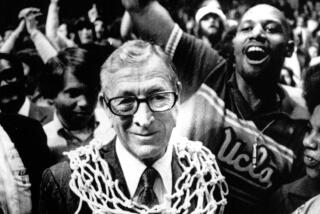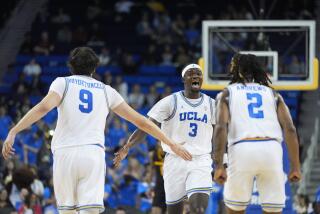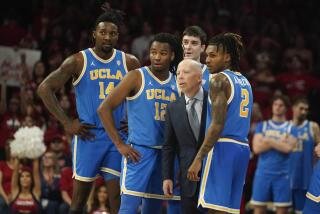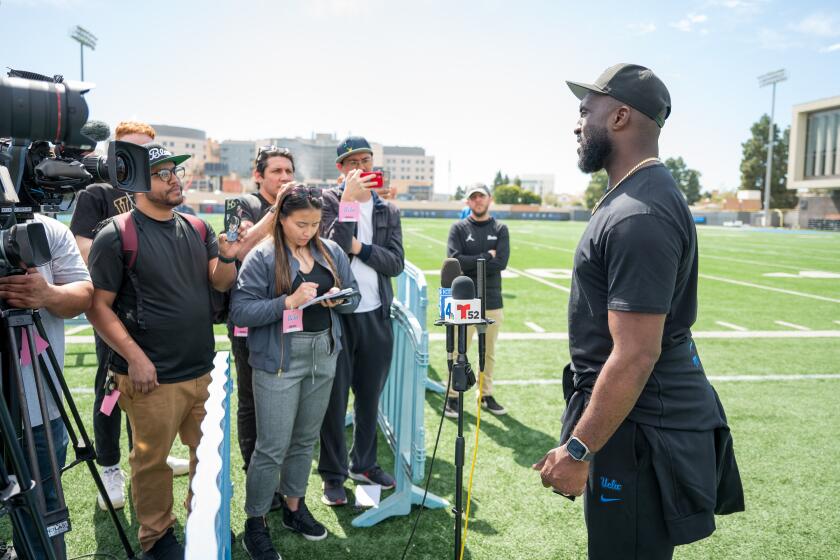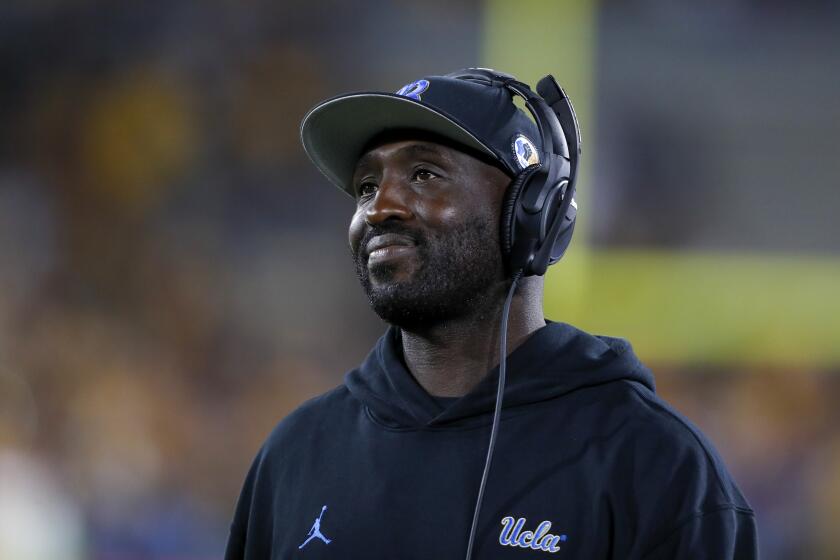College basketball: 2014 in review
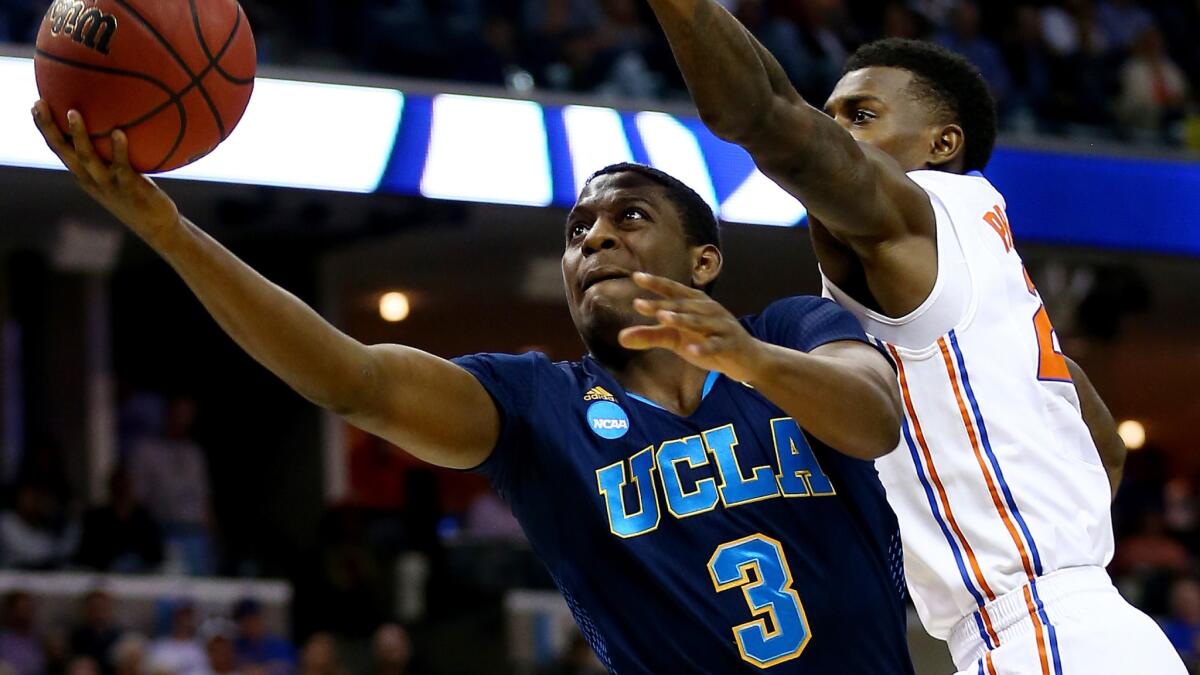
THE HIGHS
• Jordan Adams of UCLA missed a late jumper that could have tied a regular-season game against Arizona. It haunted him for two months. But in the Pac-12 Conference tournament championship game, he got another chance. With the score tied and 45 seconds remaining, Adams buried a decisive three-pointer and UCLA took the title, 75-71, over Arizona. The momentum propelled the Bruins to an NCAA regional semifinal and three players to the first round of the NBA draft.
• Connecticut brought home two national championships. The women’s team finished a perfect 40-0 and beat Notre Dame — which came into the game undefeated — by 21 points in the title game. The men’s team was far from perfect, a No. 7 seed in the tournament. But it rode Shabazz Napier all the way to a championship, and Storrs, Conn., became title town.
• It was the classic Cinderella run, the written-off low seed knocking off the favorites in dramatic fashion. The plucky underdog? Kentucky. The Wildcats were ranked No. 1 to start the season but nearly missed the NCAA tournament. No matter. To advance to the national championship game, they beat Kansas State, Wichita State, Louisville, Michigan and Wisconsin — all of which fell because they allowed Aaron Harrison to get the ball and have a shot late in the game. Harrison made three last-second, game-winning shots in a row and brought the Wildcats to the brink of a surprise title.
• The quickest way to gain fans? Beat Duke in the NCAA tournament. Mercer shocked the Blue Devils in the first round, 78-71. Then guard Kevin Canevari danced in front of national television cameras, and Mercer became a household name. Dayton pulled a similar upset, then showed some staying power. The Flyers knocked off Ohio State, Syracuse and Stanford before losing to Florida in a regional final. Dayton students flooded onto campus streets for a party after each win.
• Wichita State accomplished what no team had since Nevada Las Vegas in 1991: a perfect regular season, 34 consecutive wins. The Shockers didn’t lose until they met Kentucky in the second round of the NCAA tournament.
• She appeared on senior night in the arms of Michigan State’s Adreian Payne, holding a bouquet of flowers and smiling big. Lacey Holsworth, an 8-year-old from Michigan, met Payne two years earlier during a hospital visit. She had been diagnosed with neuroblastoma, a type of cancer, which would ultimately be fatal. The pair’s friendship became a national story as Holsworth joined Payne on senior night and helped him cut down the nets after the Big Ten Conference tournament.
• Kentucky defeated Baylor, 133-130, in a women’s basketball game that spanned four overtimes. But not before school scoring records were set, seven Baylor players fouled out and the teams combined to score the most points in a Division I women’s game. Baylor’s Odyssey Sims scored 47 points. Kentucky’s Jennifer O’Neill had 43.
THE LOWS
• A brutal season of losses for USC continued into the off-season. In Coach Andy Enfield’s first season, the Trojans won just two games during conference play. Then Byron Wesley, who averaged 17.8 points and 6.4 rebounds per game, announced he was transferring to Gonzaga. He told The Times he wanted to play for a school with a “winning tradition.” Ouch.
• One of the most intense games of the season was played at Cameron Indoor Stadium between No. 5 Duke and top-ranked Syracuse. In the final seconds, a potential tying basket for Syracuse was negated by a charge. Syracuse Coach Jim Boeheim was livid and jumped onto the court, screaming. The outburst earned him two technical fouls, an ejection and ended a great game on an ugly note.
• It has been called the biggest case of academic fraud in NCAA history. North Carolina held classes that required almost no work at all. Students didn’t even have to show up. Papers were submitted that were copied or woefully inadequate. These courses, the Raleigh News & Observer uncovered, were used by North Carolina academic advisors to keep athletes — many of them basketball players — eligible. In all, about 3,100 students, nearly half of them athletes, took the sham courses over a period of years.
More to Read
Go beyond the scoreboard
Get the latest on L.A.'s teams in the daily Sports Report newsletter.
You may occasionally receive promotional content from the Los Angeles Times.
